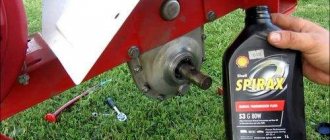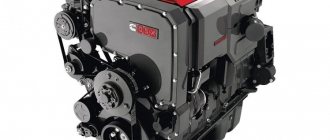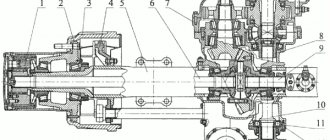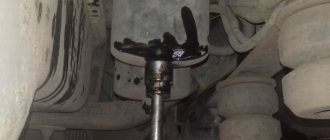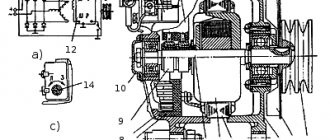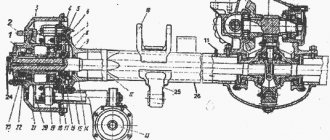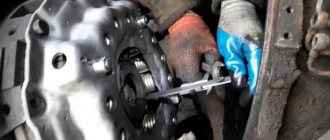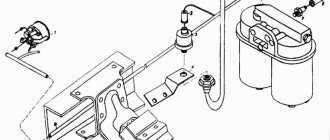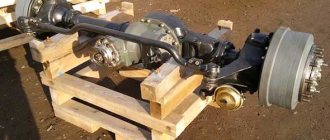Spare parts for KamAZ-65115 trucks
The Kama Automobile Plant began producing the KamAZ-65115 truck in 1995. The third generation of KamAZ vehicles have a 6x4 wheel arrangement. KamAZ-65115 was widely used for constant work in combination with a trailer, transporting passengers and various cargoes. Modifications of the third generation KamAZ are the 11-ton KamAZ-53215, the KamAZ-54115 truck tractor, and the KamAZ-55111 dump truck with a body capacity of 6.6 cubic meters. m and KamAZ-65115 - a 15-ton dump truck with a body of 8.5 cubic meters.
KamAZ-5320 has a body with a metal platform that allows you to open the side and rear sides. The all-metal three-seat cabin has the ability to recline forward and has equipped places for fastening seat belts, but does not have a berth. Friction dry double-disc clutch with pneumatic drive, as well as with pneumatic booster; The brakes are pneumatically driven. Thanks to our spare parts catalog for KamAZ-65115, you can easily find all the spare parts you need, because using the catalog is easy and convenient.
Gross weight, kg: 24800 Weight of superstructure with cargo, kg: 17400 Load capacity, kg: 8000 Weight of curbed chassis, kg: 7250 Engine: diesel turbocharged 740.11-240 Rated power, gross, kW (hp): 176 (240 ) at 2200 rpm Maximum torque, N m (kgf m): 834 (85) Arrangement and number of cylinders: V-shaped, 8 Cylinder displacement, l: 10.85 Average fuel consumption for a road train, l/ 100 km: 35 Maximum speed, km/h: 80
On the website you can buy spare parts for KamAZ-65115 in a special catalog. Our specialists will advise you on all questions and tell you about all the KamAZ-65115 spare parts that are right for you. By purchasing spare parts from Dynamics 76, you are guaranteed to purchase high-quality parts for KamAZ.
Signs and possible malfunctions of the KAMAZ gearbox
Content:
Signs of a gearbox malfunction
The main sign that the gearbox requires repair is easily overlooked. Typically, if a part is faulty at a speed of about 20 km/h, extraneous noise may occur. If the noise disappears when the speed is increased to 80, the problem is definitely in the gearbox; its teeth may need to be repaired. Another way to determine whether a gearbox is faulty. You can turn on neutral at a speed of about 80 km/h and turn off the ignition - extraneous noise appears again - start repairing the gearbox.
Types of gearbox malfunctions and their causes
Increased heating of the main gear.
- Lack or, on the contrary, excess oil in the crankcase. The treatment is simple - bring the oil level to normal and that’s it.
- Increased bearing tension - the mechanism should be adjusted.
- Incorrect adjustment of the teeth - again, debugging of the device is required.
Increased noise.
- Bearing wear. The part needs to be adjusted or replaced.
- Teeth misalignment. Can also be adjusted.
- Perhaps the bearings are simply loose. You can simply tighten the corresponding nuts.
Oil leak.
- The gear cuff may be worn out - repair or replacement will be required.
- Breather contamination. The part should simply be cleaned.
Oil fasting
One of the common causes of gearbox failure is the lack of the required oil level in the crankcase. The middle gearbox is the most sensitive to this problem. It is equipped with a MOD center differential, which is the first to experience oil starvation when its level is low. Leaks in hub and flange seals or mechanical damage can lead to oil leakage from the axle housing in which the gearbox is installed. Lack of oil leads to overheating of the gearbox and rapid failure.
Entry of foreign objects
When replacing a gearbox, it happens that the axle housing (stocking) is not cleaned well enough of foreign objects (gear fragments, rollers from bearings, etc.) and a gearbox is installed, which almost immediately fails. As a result, it needs to be changed again.
Water entering the axle housing
Water may enter the axle housing due to a loose connection to the gearbox. This is possible if there are cracks in the axle housing or there is no breather (water flows through the breather hole). Oil, when mixed with water, loses its lubricating properties, which leads to increased wear of bearings and rubbing parts. As a result, the gearbox fails.


